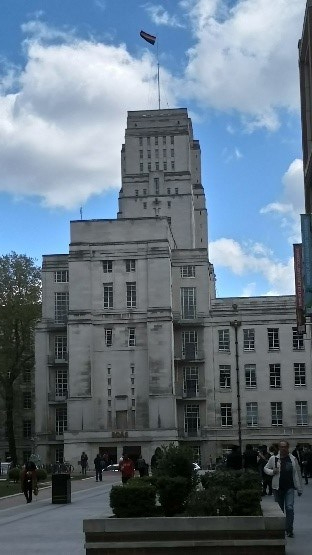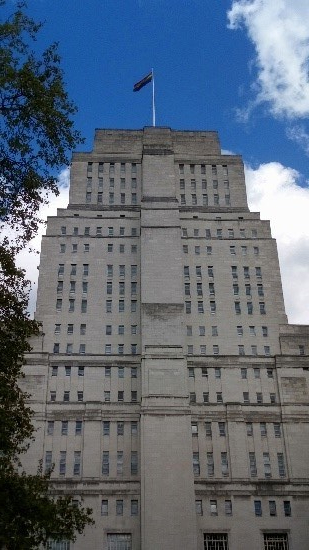2019 Activity Report
March Activity Report
31 March 2020
Global Japan Office Coordinator
Taguchi Kazumi
The March report concerns a journey I recently made, following in the footsteps of my research subject, Natsume Soseki, and more specifically the Kanshi (Chinese poems) he created.
Natsume Soseki was born in Shinjuku and also passed away in Shinjuku although at a different address. This fits in with one of Soseki’s main themes: return.
Soseki first wrote Kanshi during his student days. During this period, he was mentally troubled and a friend advised him to go and practice Zen at one of the Zen temples at Kamakura. The temple is called Kigenin at Enkakuji. Soseki was instructed by a Zen monk called Shaku Soen. Unfortunately, Soseki was unable to reach enlightenment on that occasion but from this time on he developed an interest in Zen teaching which lasted throughout his life. I visited Kamakura and was deeply impressed by the grounds and temples.
After finishing his post-graduate studies, Soseki worked as an English teacher at several Universities in Tokyo. He then decided to move to Matsuyama in Ehime prefecture in the Shikoku region where his close friend, Masaoka Shiki came from. Soseki devoted much of his time there to composing Haiku. Unfortunately, I didn’t have time to visit Shikoku on this visit.
After spending a year in Shikoku, Soseki moved to Kumamoto where he worked as an English teacher at The Fifth High School. This period is known as Soseki’s Second Kanshi period. During this time Soseki received instruction on Kanshi composition from a friend, Nagao Uzan, and made significant progress in creating the long poem style. The two poems he composed during this period both appeared in his novel, Kusamakura.
I visited Kumamoto and the Maeda Villa which has preserved a room where Soseki stayed and the hot spring which he used. This place made me feel as if time had stopped and scenes from Kusamakura appeared as living reality in front of my eyes.
After his stay in Kumamoto, Soseki went to London. After two years in the British capital he returned to Tokyo and began to teach English literature at Tokyo University. However, he had a strong desire to be a literary artist. One of Soseki’s friends recommended he come up with something, so, he wrote “I am a cat” in a literary magazine, Hototogisu. The story became really popular and made him famous, giving Soseki the opportunity to leave his teaching position and become a literary artist in the Asahi Newspaper.
Soseki worked hard as a popular literary artist. Unfortunately, however, he began to suffer from stomach ulcers, and went to Shuzenji in Izu to rest and recover from his illness. In Shuzenji, Soseki became critically ill and very nearly died. Luckily, he survived this critical period by prolonged rest: lying down in bed until he regained strength. During his recovery, he composed a number of significant Kanshi and this time is known as his third Kanshi period.
I visited the Kikuya Inn and stayed in a room where Soseki resided at the beginning of his period in Shuzenji. Soseki wrote a series of essays called “Omoidasu Kotonado” in the Asahi Newspaper during his treatment at a hospital in Tokyo after returning from Shuzenji. In “Omoidasu Kotonado”, Soseki explains that every day as he recuperated, he lay down in his bed and composed Kanshi whilst watching the sky. Soseki inserted all the Kanshi compositions he wrote during his recovery period in “Omoidasu Kotonado”.
The bell of Shuzenji which Soseki heard during his sleepless nights as he recuperated still exists, timelessly frozen in the temple of this quiet, remote spa town.
I felt like a time traveller going back to the Meiji period. I came back to a London in total lockdown at the end of March. It was so different from the time I left to go to Japan at the beginning of March. It looked as though people had disappeared just like a scene in a science-fiction or horror film.
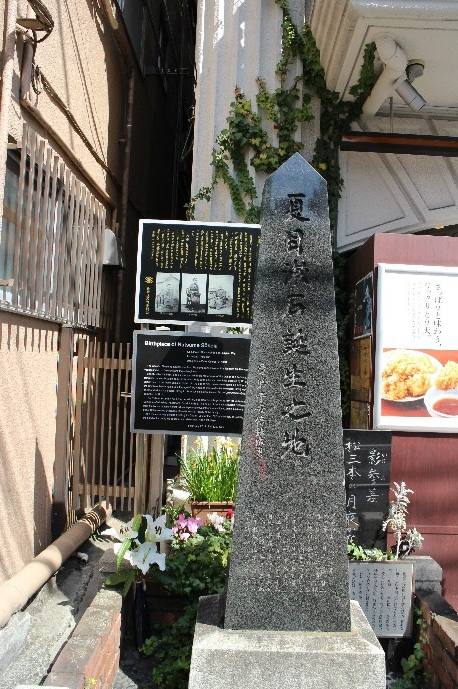
Soseki’s birth place in Shinjuku
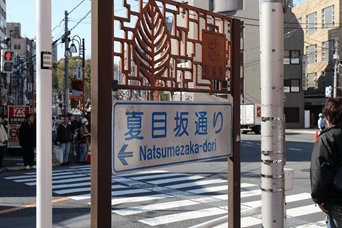
Street named after Soseki’s family name ‘Natsume’ in Shinjuku
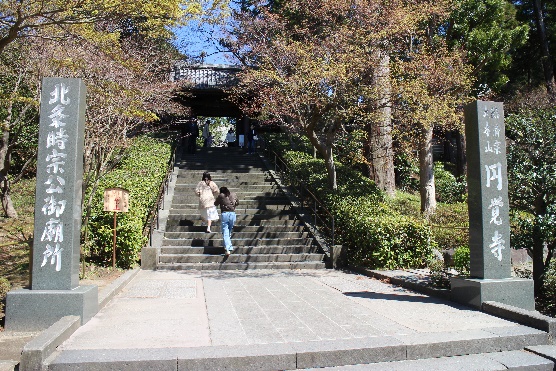
Kamakura, Enkakuji temple
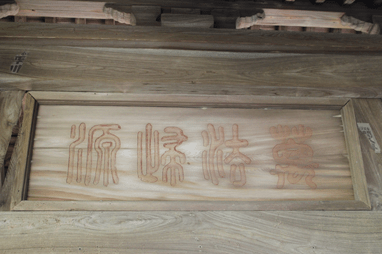
Kigen-in at Enkakuji, Kamakura
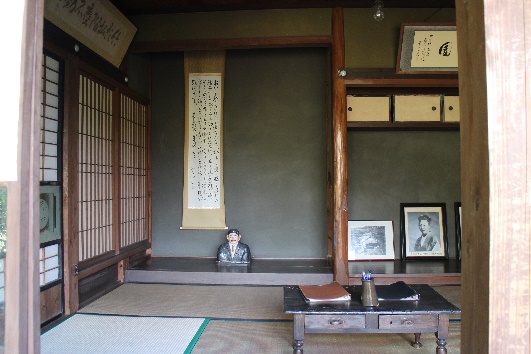
Maeda Villa in Kumamoto
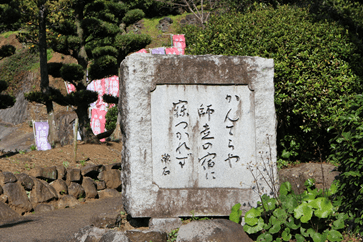
One of Soseki’s haiku engraved on stone
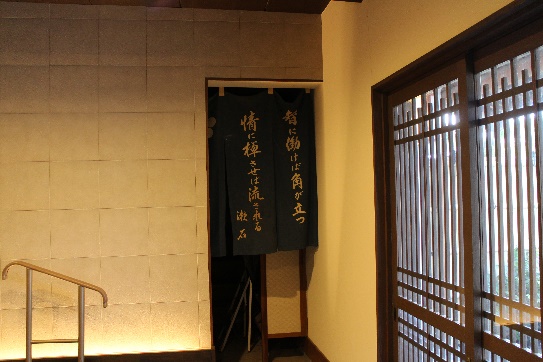
Maeda Inn, hanging cloth featuring the beginning sentence from Soseki’s novel ‘Kusamakura’
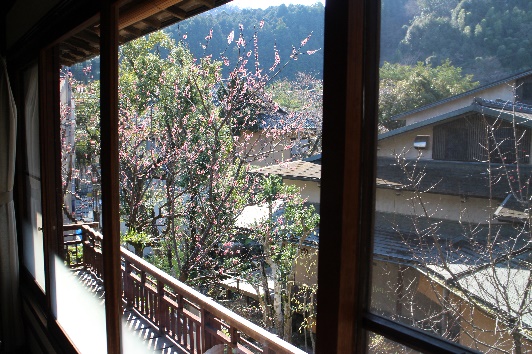
Kikuya Inn at Shuzenji, Soseki’s room (Ume no Ma)
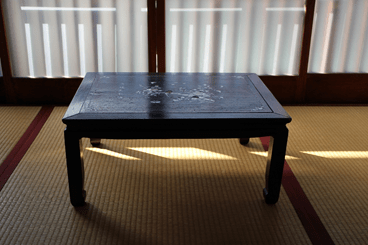
Kikuya Inn at Shuzenji, Soseki’s room (Ume no Ma)
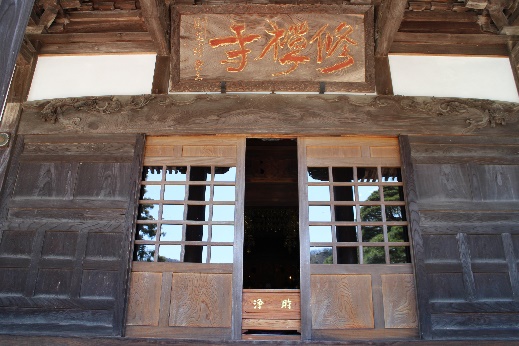
Shuzenji Temple in Izu
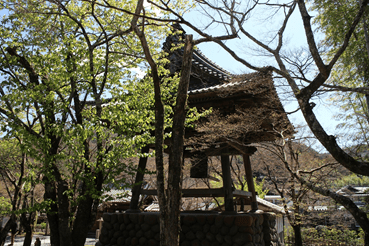
Shuzenji Temple in Izu
February Activity Report
29 February 2020
Global Japan Office Coordinator
Taguchi Kazumi
The February report is about an event organised by The Centre of the Study of Japanese Religion.
SOAS has departments for both Religion and Philosophy, and makes a continuous effort to study and understand the religions and philosophies currently existing in the world.
In the future I will discuss in detail the work carried out by The Centre of the Study of Japanese Religion (CSJR) with the centre’s chairwoman, Dr. Lucia Dolce. In this month’s report, I would like to write about a seminar that takes place regularly at the CSJR.
On this occasion the seminar was given by a third-year PhD. Student at SOAS, Emanuela Sala and was supervised by Dr. Dolce. It was a presentation of research in progress. Emanuela’s research is on Sannō Shintō. She has been researching on the relationship between Hie Mountain, Shindō, and Tentai Buddhism using “Yōtenki” as a core text. Emanuela carried out her field work at Waseda University where she concentrated on researching Chinese Buddhist Texts under the guidance of a Japanese supervisor.
Emanuela gave a talk on her research in progress using very difficult religious texts as a reference. It will be very interesting to hear the future development of her research.
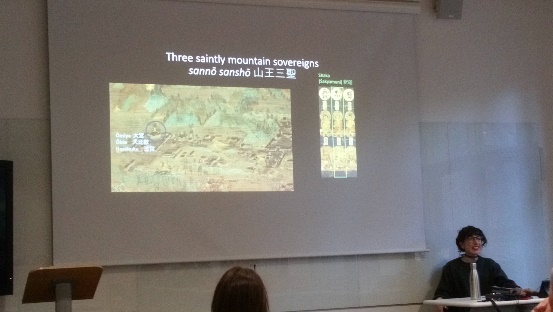
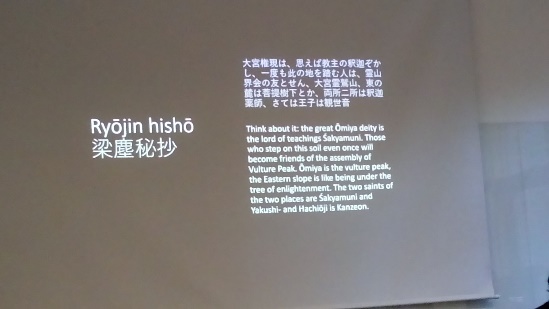
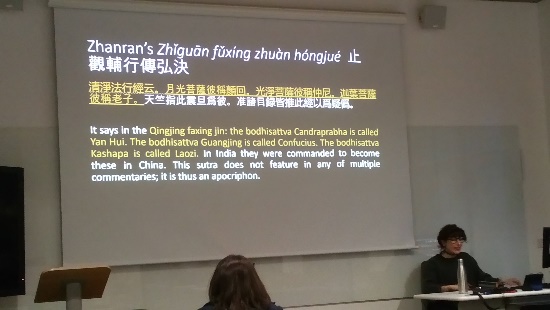
January Activity Report
31 January 2020
Global Japan Office Coordinator
Taguchi Kazumi
The January London report is about the visit made to SOAS by 21 Texas A&M University students from America. The group was led by Dr. Marty Regan, who is their teacher, composer and Shakuhachi player.
The trip was made possible after Dr. Regan asked Dr. David Hughes if he could help organise lectures and workshops for U.S. students.
The music classroom filled up with students from Texas A&M. The students were excited by the prospect of taking a class at a school which forms part of the University of London.
Dr. Hughes gave a general Minyo lecture (among the subjects, the use of notation of Esasi Oiwake to explain Minyo notation) using power point for 30 to 40 minutes. After the talk, some live music was played by the SOAS Minyo group. The Tsugarushamisen player, Hibiki Ichikawa, also performed.
There was a moment in the live music when the Texas A&M students were all invited and happy to join in the proceedings.
After the live music, we moved to a different classroom to try out our dancing skills. Texas A&M students learnt Tankobushi dance routines on the spot. We danced in a circle while the Tankobushi tune was sung and played by the SOAS Minyo group.
Texas A&M students planned to visit many other places during their visit to the UK.
There have been many students from EU in UK universities up until now. However, after Brexit, the situation at UK universities might well change.
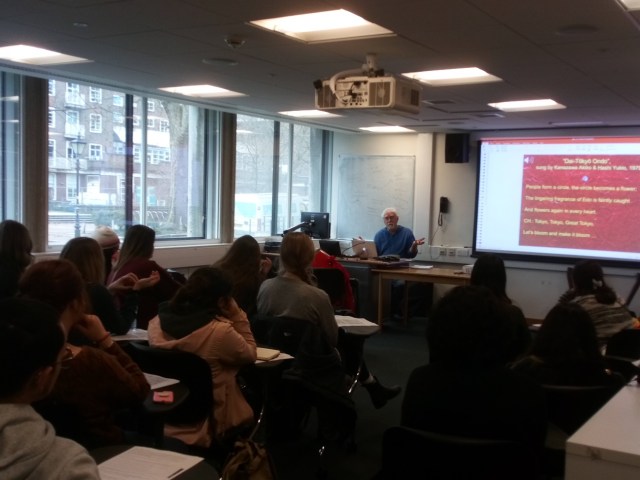
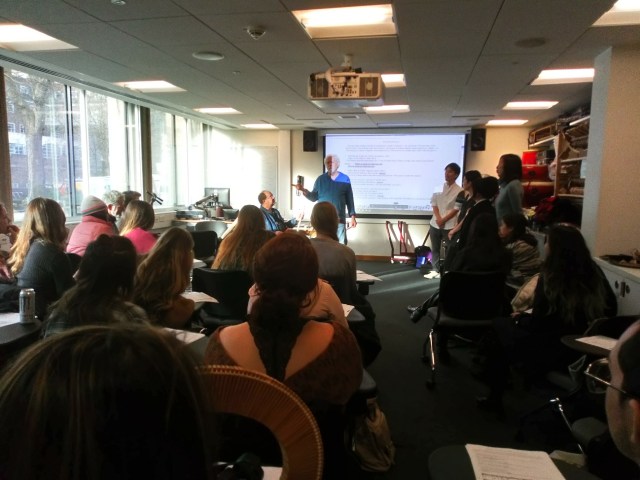
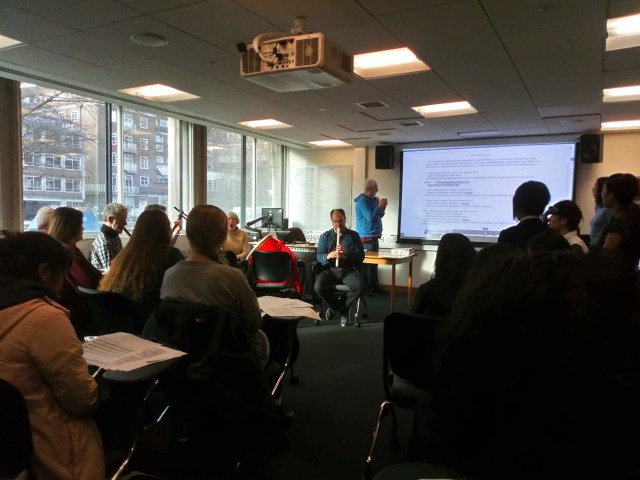
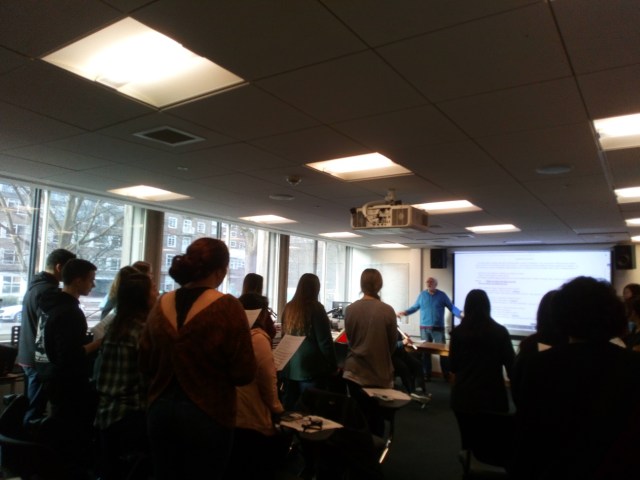
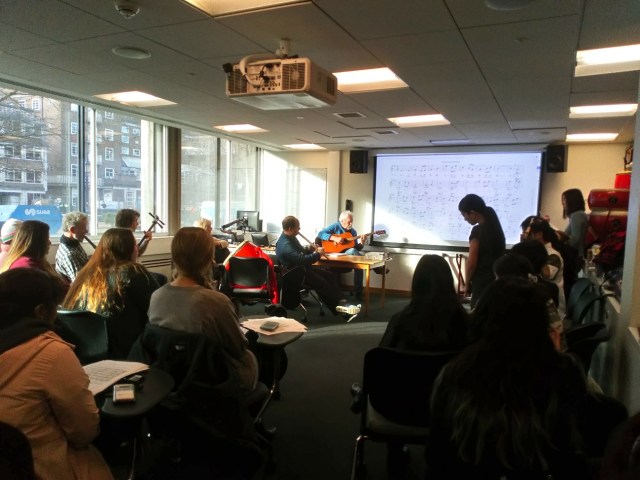
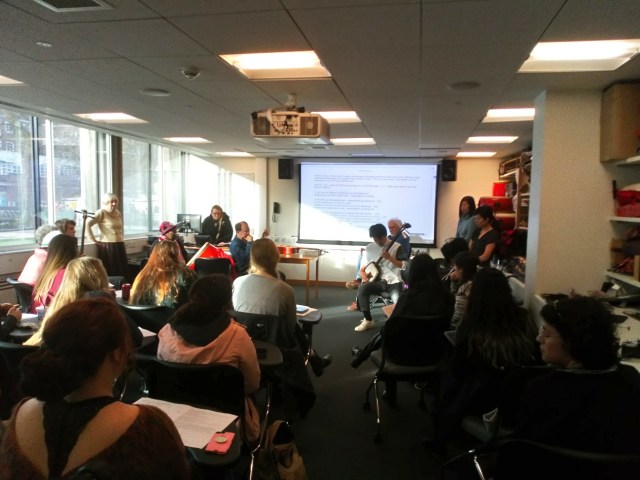
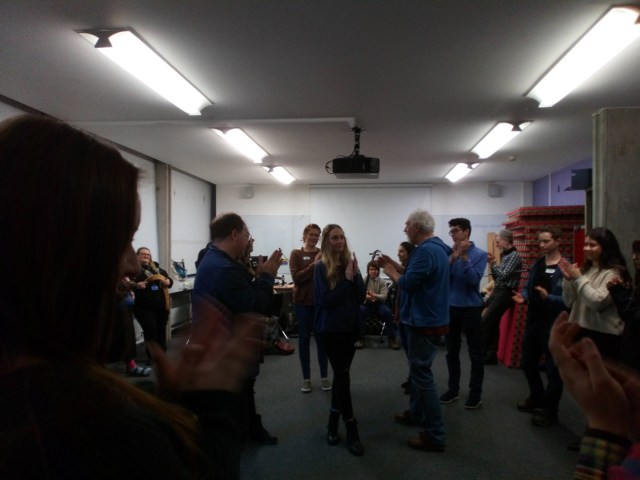
December Activity Report
30 December 2019
Global Japan Office Coordinator
Taguchi Kazumi
The December London Report concerns a gathering of students who are currently studying in London.
On the eleventh of December I organised an end of the year party bringing together two TUFS BA students studying at SOAS, one Tsuda juku BA student studying at SOAS, one TUFS graduate studying MA at UCL Institute of Education and one SOAS Japanese language graduate.
Although they all met each other for the first time, they all had a thoroughly good time chatting to each other and eating home-made food.
I got the impression that they have got used to student life in London and have been enjoying their studies abroad especially during the exciting Christmas period in London.
If I have the opportunity, I would like to have another gathering next year.
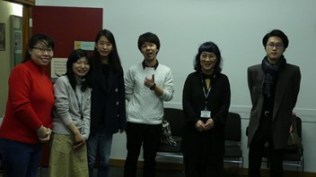
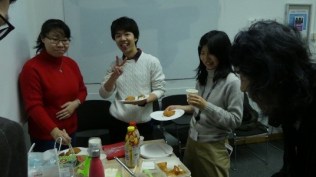
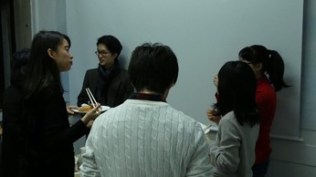
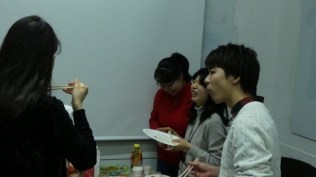
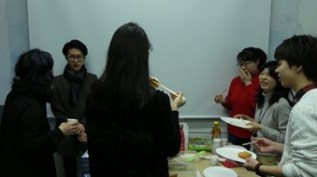
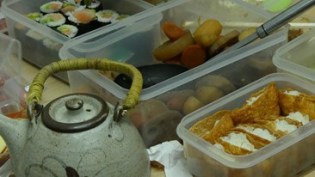
Students having a great time talking to each other while enjoying home-made food.
November Activity Report
30 November 2019
Global Japan Office Coordinator
Taguchi Kazumi
The first topic in the November report concerns a small Japanese English bilingual theatre group called Doubtful Sound who performed some of their repertory of Japanese traditional stories and folk stories at SOAS. This theatre group was formed in Tokyo in 2012, and have performed in places such as temples, Japanese gardens and festivals.
Their members consist of both Japanese and English actors and use Japanese local dialect with English subtitles shown on a screen behind the actors. For some time now the SOAS Minyo group have been collaborating in their UK performances.
The play called “Women of Ishikawa” which they performed in a small space with limited props consists of a selection of strange, hilarious, and tragic folk tales which create their own unique environment. It will be interesting to see how they develop as a theatre group in the future.
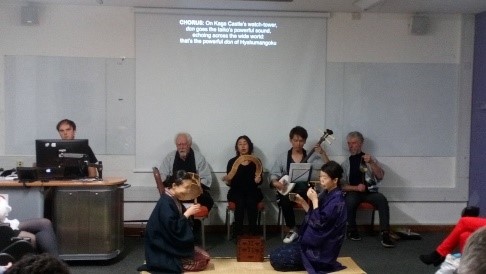
Doubtful Sound performing accompanied by SOAS Minyo group
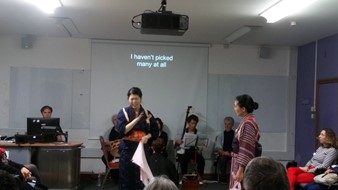
For the second topic of the November report I would like to write about a world travel industry exhibition called World Travel Market. (WTM)
WTM takes place once a year in a huge exhibition hall and is designed for travel industry professionals. There are many tourist organisations all over the world participating in this event promoting tourism in their regions on a world scale.
Many prefectures’ travel divisions in Japan participated. There was a special booth promoting Tokyo 2020 for the Tokyo Olympics. This exhibition gave the impression that 2020 would be a great year for tourism in Japan as many tourists would be coming from overseas.
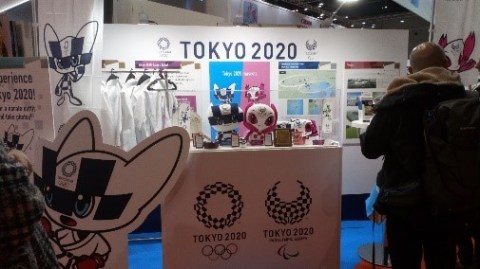
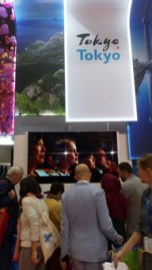
Tokyo 2020 booth promoting the 2020 Tokyo Olympics
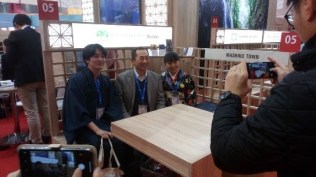
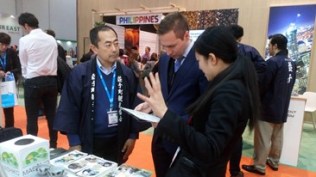
Mashiko Tourist Association promoting Mashiko Town, Tochigi Prefecture
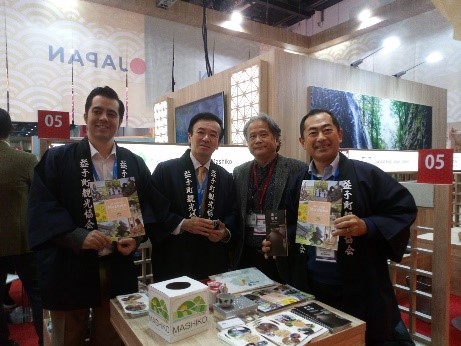
From the left the Mashiko Town tourism Coordinator, the Mashiko Town Governor, the organiser of the Japan section and the President of the Mashiko Sake brewery
October Activity Report
31 October 2019
Global Japan Office Coordinator
Taguchi Kazumi
The first topic of the October London Report concerns an event held at the British Museum to promote tourism in the Kansai region. This event was organised by 10 prefectures in the Kansai region and its aim was to introduce and promote tourism in their region. The event itself was not open to the general public and only accessible to people from the tourist industry and other associated organisations like those in the Olympic and Charity sectors.
There were introductory talks at the lecture theatre by each prefecture describing their locations and highlighting sightseeing spots. At the end of the presentation there was a demonstration of Japanese Classical Dance performed by Maiko and Geiko.
Later on, there was a reception upstairs in the Great Court. The Japanese Ambassador in London gave a speech to celebrate the event at the British Museum. Maiko and Geiko went around welcoming and greeting the guests. After that, there was a question and answer session for Maiko and Geiko, in which they explained the ins-and-outs of their profession. It has a long and distinguished history, and its rich tradition was exemplified by their graceful manners. Maiko and Geiko’s graceful demeanour fitted perfectly within the setting of the British Museum.
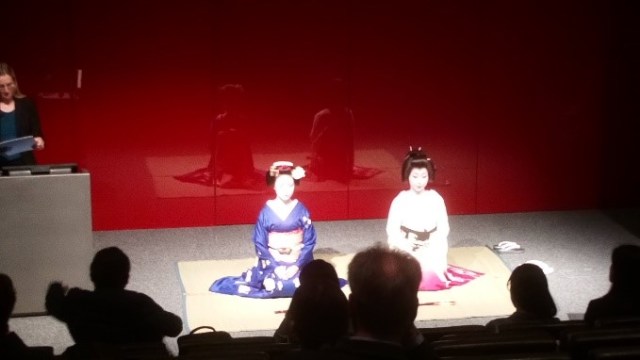
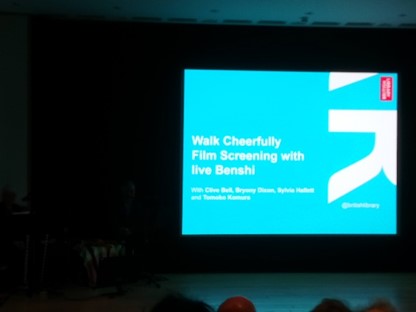
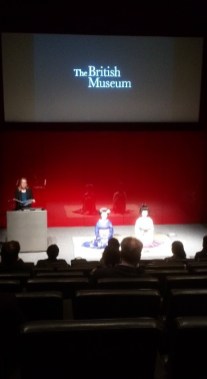
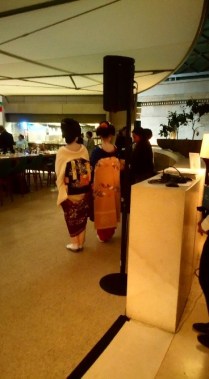
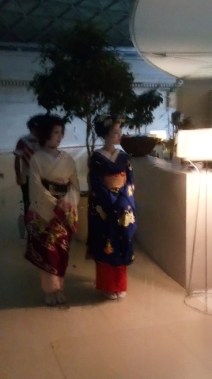
The second topic in this month’s report is dedicated to a Japanese film which was shown at the British Library. I have written about silent movies in the Benshi tradition in the past. Once again, a silent film in the Benshi style was presented. It was directed by Yasujiro Ozu and titled “Walk Cheerfully”. Tomoko Komura performed and the sound effects were created and played by Clive Bell and Silvia Hallett.
There are numerous Ozu enthusiasts in the UK, and many of them attended this special screening. The theatre was full of people who couldn’t possibly miss this rare opportunity to catch Ozu’s silent film with a Benshi narration.
You get drawn into the film by a combination of Komura’s rhythmic and brilliant narration and the extremely mesmerising sound effects and accompanying music. It was a pleasant night indeed.
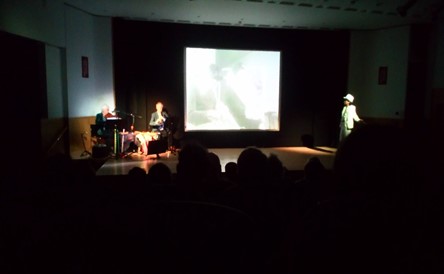
September Activity Report
30 September 2019
Global Japan Office Coordinator
Taguchi Kazumi
The first part of the September report is about a female Noh academic, singer and performer, Aoki Ryoko, who took a short break from her concert tour of Berlin, Cologne and Budapest to visit London and gave a talk about Noh and her project of combining Noh performance with contemporary music.
Ryoko Aoki obtained a BA and a Master of Music from the Faculty of Music at the Tokyo National University of Fine Art and Music (with a focus on the Kanze school of Noh theatre). Then, she took a PhD programme at The School of Oriental and African Studies, University of London, and obtained her doctorate with a thesis on “Women and Noh”.
Ryoko Aoki was appointed as a “Japanese Cultural Envoy” by the Agency for Cultural Affairs of the Japanese government in 2015 and is an important artist in terms of introducing and transmitting Japanese culture to the world. She is also a cultural ambassador for the Minato-ku district in Tokyo.
When you try to explain Aoki as an artist, it may be more appropriate to call her a “Noh artist” rather than a “Noh practitioner”. Noh is a theatrical art form consisting of dance (Mai) and singing (Utai). Aoki is attempting to create a form of contemporary music incorporating Utai singing.
Aoki is a pioneer in the field and creating a new artistic form combining Noh with contemporary music by asking composers of contemporary music to create music for Noh style singing. In four years she collaborated with 16 composers. More than 50 works have been written for her by various composers including Peter Eötvös, Toshio Hosokawa, Stefano Gervasoni and José María Sánchez-Verdú.
Aoki continues to collaborate on a global scale with major contemporary composers, creating and performing new material using the Utai singing style which tells Noh stories in poetic form with a particular rhythm. Her activities have been picked up by domestic and international TV, radio, magazines, newspapers and various media. Aoki was used as the main visual image for Isetan Mitsukoshi JAPAN SENSES in the Spring of 2017.
A theatre piece has also been composed for her. In 2015, she premiered Noriko Baba’s “Nopera” AOI in Paris. Aoki is an important Noh artist, performer and academic who is challenging and transforming traditional Japanese culture into something new and innovative, and right now the world is paying serious attention to her.
Reference: https://ryokoaoki.net/
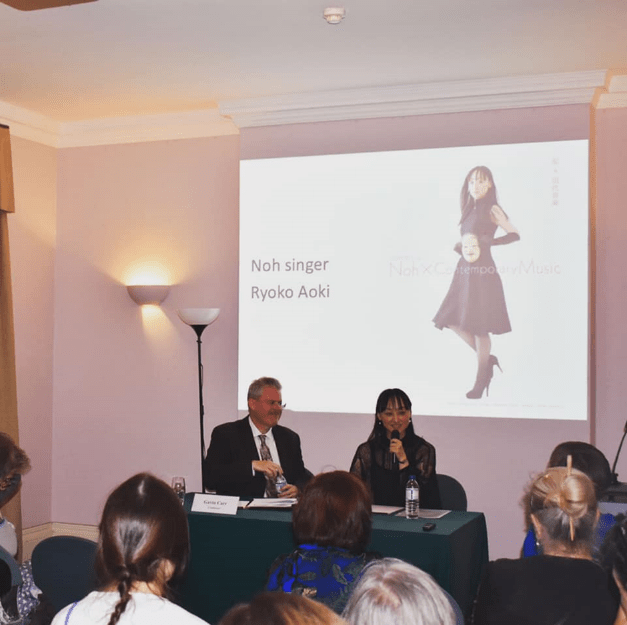
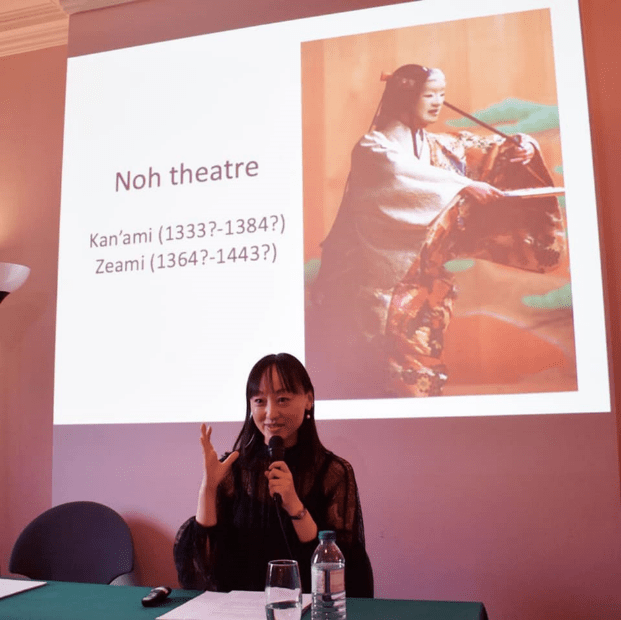
The second part of this article is about the New Students welcoming event at SOAS organised by the Music Department.
The group performing Okinawan music consisted of Aragaki Mutsumi, MINA and Tamura Yuko. MINA who is Swiss/Japanese and lives in London, was trained as a classical violinist. She has been exploring sounds with both Oriental and Western approaches. A self-taught Sanshin player and singer, she is currently working on various projects. Aragaki is from Okinawa and still lives there. She has been working and searching out new sounds using electronics with the Okinawan traditional sound as a base. Aragaki adds soundscapes to her experimental music and expresses her art by uniting sound and visual images. Tamura Yu is a multi-disciplinary performance artist working across theatre and dance. As well as her dynamic dance, she also tells stories.
The welcoming event featured music from many different regions of the world such as India, China, The Middle East as well as Latin America, mesmerising new students with melodies and instruments from around the planet. Here are some photos of the event.
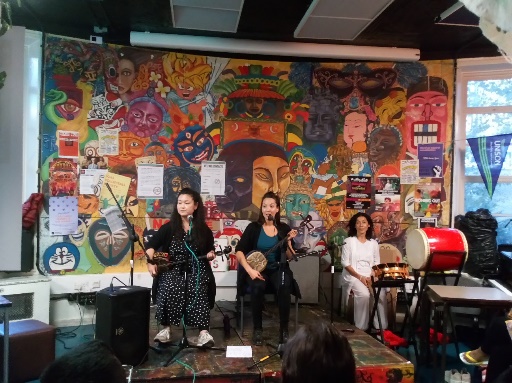
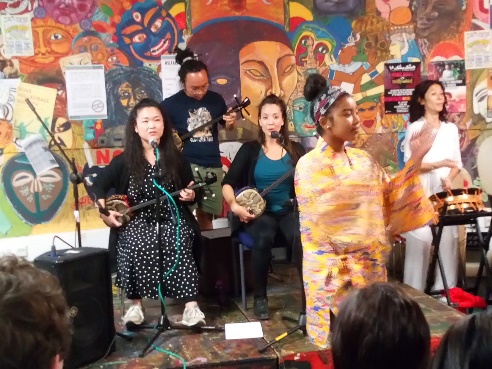
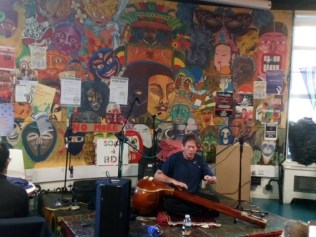
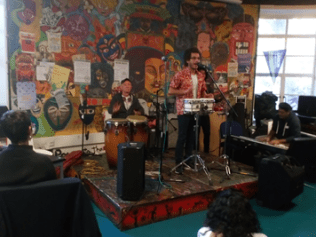
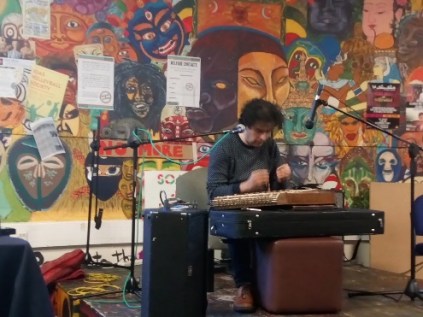
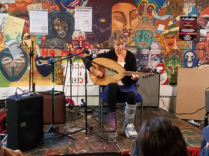
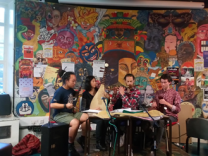
July Activity Report
31 July 2019
Global Japan Office Coordinator
Taguchi Kazumi
The first item in the July London Report concerns The British Museum Manga Exhibition Event No. 2. A big and important display of Japanese Manga. Although open to the general public, a special night was set to celebrate the exhibition. A famous designer, Kansai Yamamoto was invited from Japan and organised a fashion show reflecting many of the elements on display at the Manga Exhibition.
The musical entertainment was provided by Hibiki Ichikawa, playing Tsugarushamisen and DJ Takaki. They teamed up and performed together surrounded by Greek statues. Greek sculptures and the performers wearing Japanese traditional fabric with a touch of influence from Middle Eastern ethnic costumes designed by Kansai Yamamoto, created an exotic atmosphere in which it was hard to be sure where you were anymore.
On top of that, there was also a Sake tasting session. It was a true Midsummer Night’s Dream.
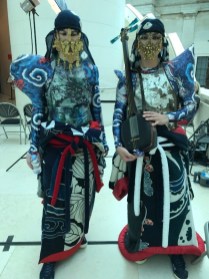
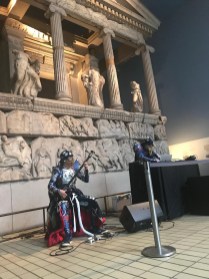
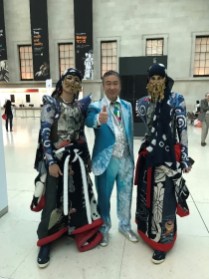
Another topic that I would like to cover is the language exchange that I organised between a student who studied Japanese language at SOAS and a member of the administrative staff who was visiting SOAS to participate in one of SOAS Summer Training courses. I asked them for feedback on their language exchange experience.
Shuling Zhu, a student in Japanese Language at SOAS was born in the UK and her parents were both of Chinese origin. Shuling graduated from her BA studies at SOAS this Summer. She studied Japanese before she began her degree course. She says her passion for learning Japanese became serious when she started to study it from the basics in a more academic way. Shuling said that she was grateful for being guided not only spiritually, but also being taught to understand more about the whole cultural background of the language.
Shuling chose to study a year abroad at Kobe University. She felt it was a very useful experience in that she was able to learn the language and apply it to her daily life, as well as helping her get a better idea of the local dialect and culture.
The valuable experience she gained through studying abroad gave her the confidence to speak Japanese. One of the main reasons she is participating in the language exchange is to maintain the skill of reacting to a change of subject quickly and smoothly whilst speaking Japanese.
Mr. Taniguchi who is a member of the administrative staff at TUFS, was visiting SOAS for one month. He said his reason for participating in the language exchange, was that he was currently attending a Summer course designed for foreign students who come to London to learn to speak English. However, the students on the course were limited to a fairly low level of English which every foreign student in the class could understand. Mr. Taniguchi felt that he would like to have the experience of speaking to a native English speaker so he could learn more colloquial expressions and hear more of the language as spoken by a native. Mr. Taniguchi felt that he did indeed learn a lot of idiomatic English which he would not have been able to learn in the class or from his fellow language students.
Shuling would like to continue taking part in language exchanges after her graduation. And I would be happy to organise more events of this kind.
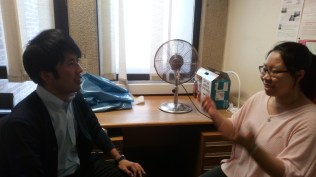
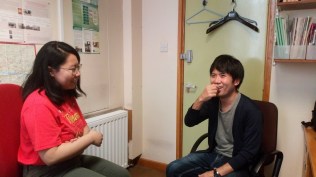
June Activity Report
30 June 2019
Global Japan Office Coordinator
Taguchi Kazumi
The June London Report is all about the Manga Exhibition being held at the British Museum. The opening night was for members of the museum and featured an event with performances celebrating traditional music on the Koto and Shakuhachi and a Japanese traditional dance called the Nihon Buyo.
The performance took place in the Great Court. The sound of traditional Koto music played by Keiko Kitamura and Shakuhachi played by Michael Coxhill began to draw an audience to the main court. The sound of Koto and Shakuhachi expressing abstract nature resonated under the glass ceiling where a clear blue sky could be seen. It created a lovely calm atmosphere in the Great Court.
After the musical event, there was a traditional dance performance by several dancers. First came a dancer dressed as Fuji Musume, performing a beautiful elegant dance. Mamiko Sato, who is a Kimono costume specialist, and runs a company called “Kimono de Go”, prepared the dancer’s amazing costume. She was extremely busy helping out in all types of ways with the exhibition and events in addition to doing session work with a professional photographer in order to capture the event for posterity.
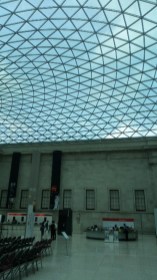
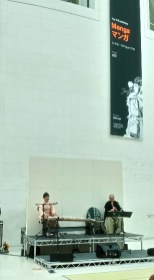
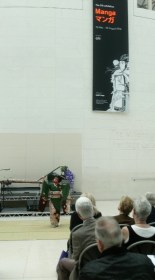
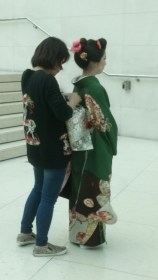
At the entrance of the exhibition, Alice from “Alice in Wonderland” welcomes you to enter the room. You now feel as if you are going into a rabbit hole. A cartoon character, Salah Moon also welcomes you jumping up in the air with rabbits. At the entrance, there is a note saying, “Alice in Wonderland has influenced many mangas in Japan. We invite you to the journey through the rabbit hole.”
At first, you come across a painting of rabbits jumping in various stages of motion. This style of painting reminds me of a sketch from the Edo period in which artists observed and studied the movements of animal, bird, fish, people and nature. Next to that painting is a painting of a frog and rabbit in brush and ink mounted on a hanging scroll. Beside the hanging scroll, there is another scroll. This time, it is a cartoon portrait of a newspaper novelist, Natsume Sōseki, drawn by an illustrator, Ippei Okamoto. In explanation, it is said that Sōseki discovered Ippei and introduced him to the Asahi Newspaper. Okamoto worked as an illustrator on the Asahi from the 1920s to the 30s, drawing comical illustrations. First of all, the exhibition introduces manga from a historical perspective. Later, we see a huge painting on a wall by Kawanabe Kyōsai who was an eccentric artist from the Edo period.
After that, there are plenty of Manga one after another. A recording of Tezuka Osamu, who was a legendary animator/artist, explaining about animation was on a screen. Of course, you can see a three D image of Atom Boy, who is a famous anime character created by Tezuka. There is also Joe from Ashita no Joe, as a 3D image.
Among the many treats: Kamui-Den, Golgo 13, Dragon Ball, Nyarome and Iyami two of which were created by Akatsuka Fujio and works by Hagio Moto who is popular in the world of girl comics. There are, off course, characters created by Miyazaki Hayao who was well-known as an animation artist, and Pokemon, an unforgettably popular character. It is truly an Animation Paradise.
There is an area set up for costume play where you can dress up as anime characters. Gigantic photo images of Japanese bookshops from both the old and modern period are on show and there is a space inside where you find a little manga shop and can read comics to your heart’s content. There is also a display in which the onomatopoeic sound, Gyaa is seen as a three-dimensional image.
As well as offering a lot in terms of entertainment, the exhibition also has a lot to offer from an academic point of view. It is an ideal example of that quintessential and wonderful method of British education in which learning is as fun-filled a process as possible.
The exhibition is categorised into sections, “Pictures run riot”, “Power of Manga”, “Manga: no limits”, “A Manga for everyone”, “Drawing on the past”. It explains the many important elements of manga culture: their artistic excellence, story-telling dimension, the characteristic of constantly evolving, adaptability, their global appeal, and the way they serve as a platform for artistic expression.
I had never analysed anime culture before, and I felt that I realised, through this exhibition, some of the reasons behind the popularity of anime. Now, I understand the reasons why manga is able to appeal to so many people reaching through all ages and nationalities. I had never dreamed of re-encountering the animation, “Tetsuwan Atom” “Atom Boy” in English, I used to watch it when I was an elementary school student at the British Museum. This is part of the phenomena of Alice in Wonderland.
Imaginative projects such as this exhibition have that quintessentially British characteristic of maintaining one’s childhood dreams somewhere safe in your mind and keeping the door open to return to that safe place whenever you want to go back even after you become adult. It has that characteristic of connoisseur taste which is sometimes considered to be eccentric, but it’s precisely this element of “Alice in Wonderland” which attracts, thrills and beguiles the onlooker.
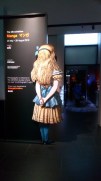

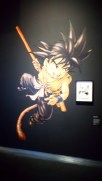
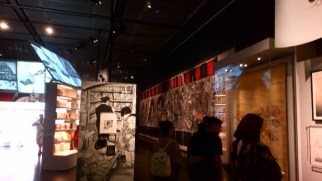
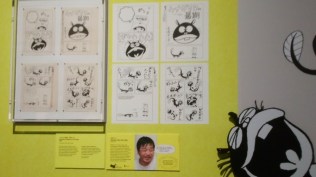
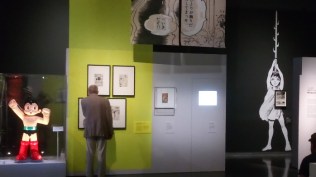
May Activity Report
31 May 2019
Global Japan Office Coordinator
Taguchi Kazumi
The May London report is about an Enka singer, Akari Mochizuki, who organised an event in London celebrating the 10th anniversary of her career as an Enka singer. In the past, a Japanese TV company has filmed and broadcast in Japan a feature presenting her contribution to the Enka style.
Ms. Mochizuki is also active in performing as a Japanese traditional folk singer and works with the Tsugaru Shamisen player, Hibiki Ichikawa, in a Min’yo duo. The London report has written about their activities in the past. Their performances as a Min’yo duo have proved very popular and they have been invited to cultural events in many countries.
The 10th anniversary event took place in a Japanese restaurant near the British Museum. When I arrived at the venue, the place was packed with Ms. Mochizuki’s fans who were highly excited about the prospect of listening to her singing.
The event consisted of two entertaining and enjoyable sections; the first half was dedicated to Enka songs (Japanese popular ballads); the second half featured Kayōkyoku (modern Japanese popular songs). There was an interval between the 1st and 2nd performance in which snacks were served.
Ms. Mochizuki appeared wearing a Furisode Kimono costume and sang about seven popular Enka numbers including “Amagigoe” and “Tsugaru Kaikyō Fuyugeshiki”. She talked in a witty and funny way between the songs and the mood of the show was always friendly and relaxed.
During the interval, plenty of food such as Sushi, Takoyaki, Yakisoba and Agedashidōfu was served, buffet style, on a table. After being satisfied and filled up with delicious food, the second half began.
In the second half, she changed her costume from a Kimono into a dress, and sang modern popular hit songs sung by famous idols from the 80s such as Momoe Yamaguchi and Akina Nakamori. She also entertained the audience by impersonating popular singers. Ms. Mochizuki is also known as Mocchy amongst her fans who expressed their excitement and support reciting her name, Mocchy, many times.
She also sang duets with male singers, and not only Japanese male singers, an English man, also joined in, passionately singing a song in Japanese: something else which added to the excitement of the performance.
To end the fun event, for her finale, she sang an original song. In the UK, Karaoke is very popular and Karaoke nights take place at many pubs. An English version of Karaoke culture has been established and grown in popularity amongst the people. I hope Japanese Enka will become a part of British culture. Ms. Akari Mochizuki is the perfect ambassador for this musical style.
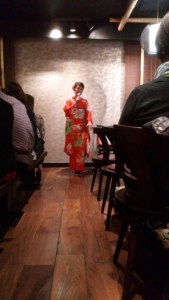
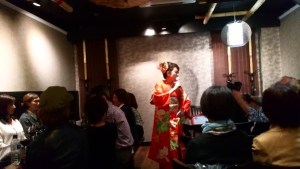
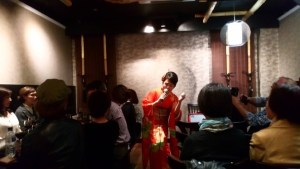
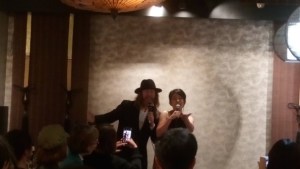
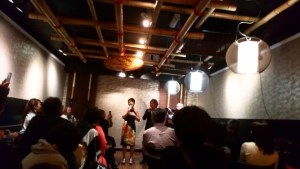
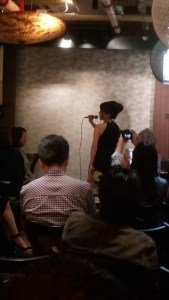
April Activity Report
30 April 2019
Global Japan Office Coordinator
Taguchi Kazumi
The April London report concerns recent events at SOAS.
SOAS has a building called the Brunei Gallery named after the nation of Brunei which donated the funds for its construction. It was named the Brunei gallery to show gratitude and respect to the donor. Recently, however, the name of the building has become a big issue for the school and the students of SOAS. The reason for this is that the sultan of Brunei issued a law proclaiming that same-sex couples would be punished with a death sentence.
The Brunei gallery has spaces for lectures, concerts and conferences, as well as a small gallery and Japanese style roof top garden. Some of its facilities are open to the general public. It is a very useful and functional building for SOAS.
In the past Brunei has been a great donor and contributor to SOAS. However, the attitude and decision taken by Brunei of violating human rights and discriminating against same-sex couples is for SOAS an unforgivable and intolerable action, as the school believes in the equality of all ethnicities, religions, beliefs and sexualities, and aims to create a society which encourages mutual understanding between different groups of people.
Some people are calling for the Brunei gallery to be renamed. You can also see the rainbow flag instead of the school flag flying from one of its buildings in order to express support for the gay community and respect for human rights. It’s the sort of gesture that is typical of SOAS.
